John Brown and the Road
to the Civil War
By Bobby Shipman
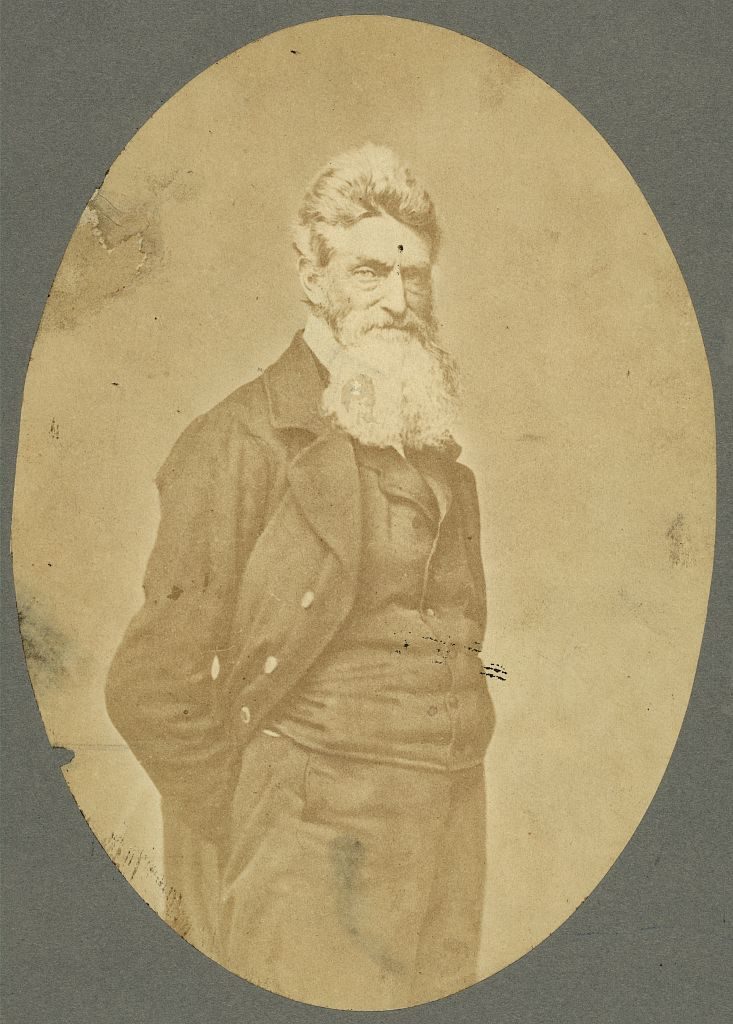
John Brown, 1859. Library of Congress
Do you know what slavery is? Slavery is part of Connecticut’s history.
Slavery is forcing someone to work without pay and taking away their freedom. The enslaved person was thought of as property like a farm animal. Slaves could be beaten if they didn’t do what they were ordered to do.
Slavery was allowed in America from the first European settlement in the 1600s. It became illegal in Connecticut in 1843. A war was fought to end slavery in the rest of the United States: the Civil War. After the Civil War Congress passed the 13th amendment to the U.S. Constitution. The amendment outlawed slavery. Slavery had existed in the United States for more than 200 years.
Slavery in Connecticut
At the time of the first European settlements, Native Americans captured in war were enslaved. But they could easily escape and return to their tribes nearby. Most enslaved people were kidnapped in Africa. They were sold to slave traders who brought them here on ships to sell. The Africans arrived in a foreign place where they had no family or friends. Read an enslaved person’s story in “Venture Smith’s Remarkable Life.”
Not everyone accepted slavery. Some people thought Africans and African Americans should be treated the same as whites. They were called abolitionists. John Brown was one of them. He was from Connecticut. In 1859, he tried to end slavery with violence. He tried to create a slave rebellion in Virginia. Though his plan failed, his actions electrified the nation and helped start the Civil War. Some see him as a hero and some don’t.
John Brown’s Story
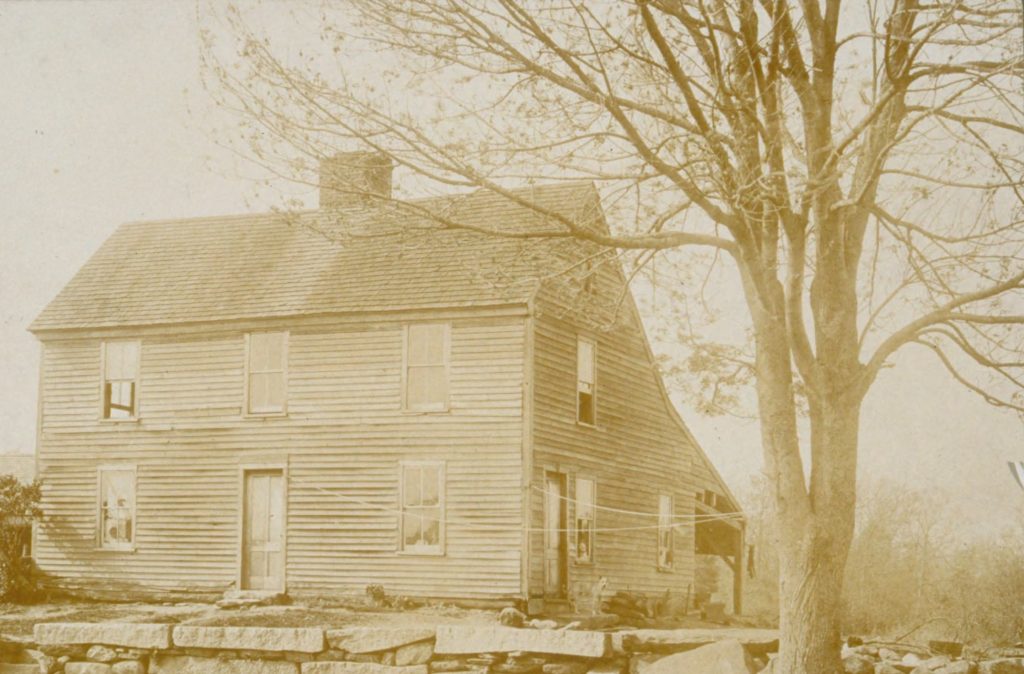
John Brown’s birthplace, c. 1890. Connecticut Historical Society
John Brown was born on May 9, 1800, in Torrington, Connecticut. His father, Owen Brown, believed very strongly that slavery was wrong. John was five years old when his family moved to Ohio. Ohio had been settled by many people from Connecticut. Slavery was illegal there and it was home to many people who disagreed with slavery. Since so many people around him believed slavery was wrong, John believed it too.
John Brown grew up. He worked as a farmer, a tanner (someone who turns animal skins into leather), a wool merchant, and a surveyor. He moved around a lot. He struggled to feed his large family (he married twice and had 20 children!)
He was passionate about ending slavery. He helped escaped slaves. He protected them from men who tried to recapture them.
In 1849 he moved to North Elba, New York. The town was in the wilderness of northern New York. Gerrit Smith, an abolitionist, owned a large area of land there. Smith gave land to African Americans. John Brown decided to move there to help. He bought 244 acres to farm. But farming was difficult in the rocky soil.
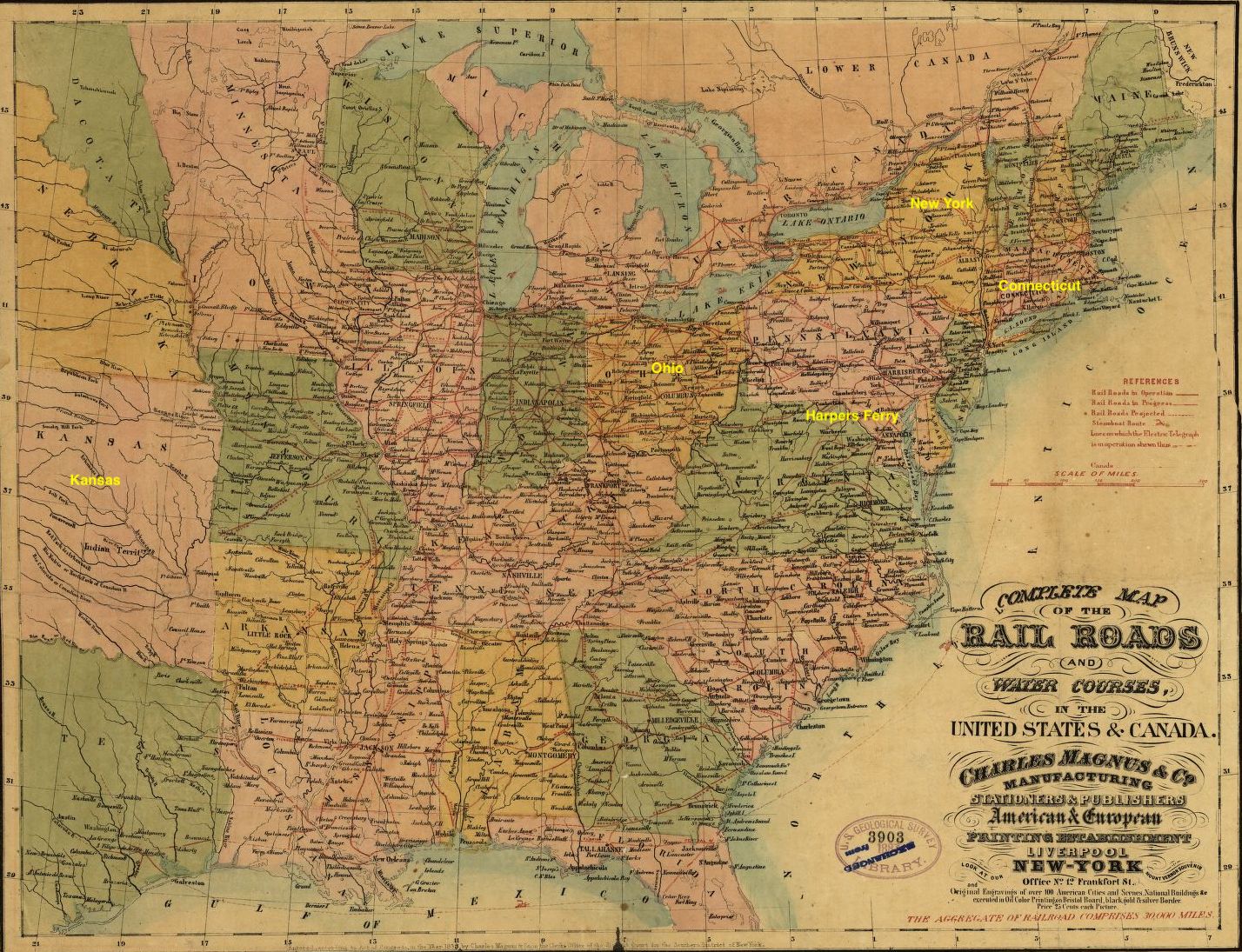
Map of the United States in 1861 showing locations where John Brown lived.
John Brown in the Territories
The new nation was expanding. New territories in the West wanted to become states. Many people wanted those new states to allow slavery. Other people were against expanding slavery.
In 1854 Congress passed the Kansas-Nebraska Act. The act created large new territories for settlement. The act said that when the territory became a state, it could decide if it wanted to allow slavery or not.
People who were for slavery flooded into the Kansas. Abolitionists who were against it also flooded the territory. Five of Brown’s sons moved there. In 1855 John Brown moved to Kansas, too.
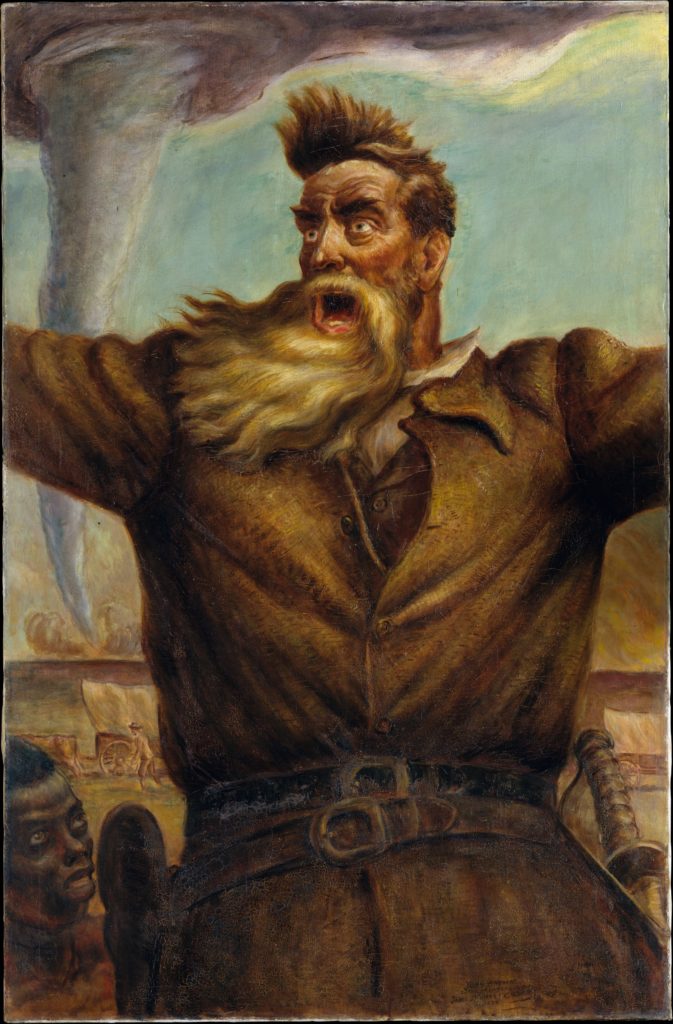
John Steuart Currey painting of John Brown from 1939 was a study for the artist’s mural in the rotunda of the Kansas State Capitol. The tornado symbolizes the coming war. Metropolitan Museum of Art
In May 1856 violence broke out nearby. The anti-slavery town of Lawrence was attacked by pro-slavery settlers. On the evening of May 24, Brown, his sons, and three others counter-attacked. They killed five pro-slavery men. It became known as the Pottawatomie Massacre, named after a nearby creek.
Violence erupted across the territory. Brown’s son Frederick was killed. Brown said, “I have only a short time to live, I will die fighting for this cause. There will be no more peace in this land until slavery is done for.” The authorities were looking for him. He went into hiding. He moved around talking to people about abolition and gaining supporters.
John Brown Attacks Harpers Ferry
Brown began building a small army. In 1858 he came up with a plan to start a slave rebellion. He planned to attack Harpers Ferry, Virginia (now in West Virginia). The U.S. Government had an arsenal, a place to store weapons, there. Brown’s men would take the weapons and give them to enslaved people. The slaves could then free themselves.
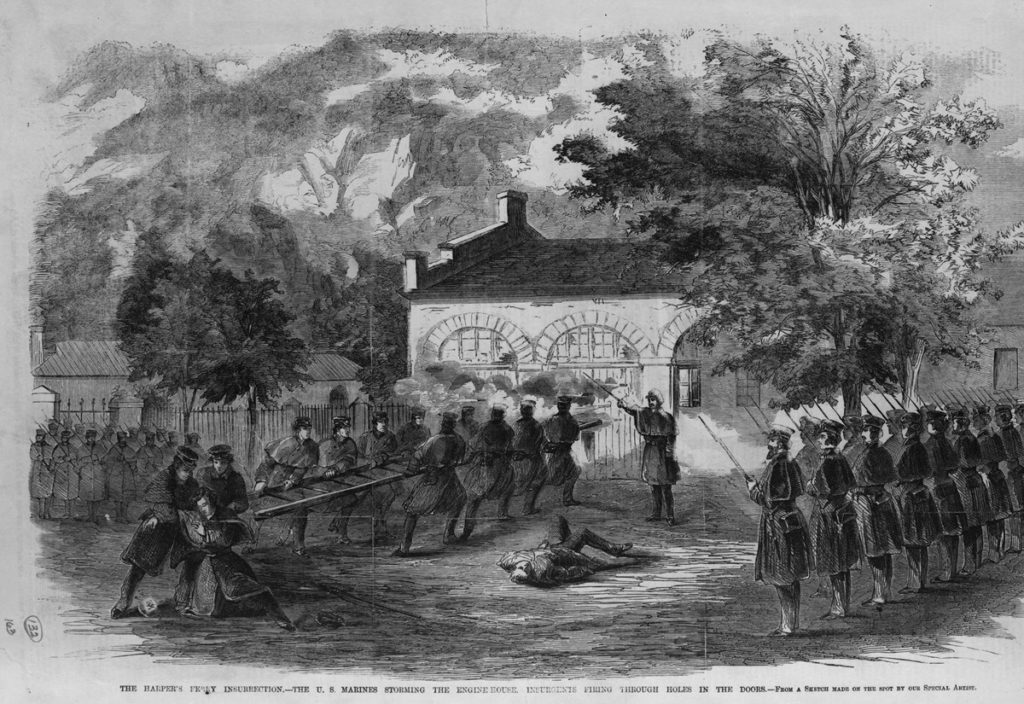
U.S. Marines storming the place where John Brown and his men were firing from holes in the doors. From Frank Leslie’s illustrated newspaper, v. 8, no. 204 (1859 Oct. 29), p. 342). Library of Congress
On October 16, 1859, Brown and 21 others carried out their plan. His sons Owen, Watson, and Oliver were with him. Five of the men were African American.
The local militia soon arrived. After 36 hours of fighting, Watson, Oliver, and seven men were killed. Owen and four others escaped. Brown and six men were captured. They were brought to trial, and convicted of treason. Treason is betraying your government. They were also convicted of murder. On December 2, 1859, John Brown and the other men were hanged.
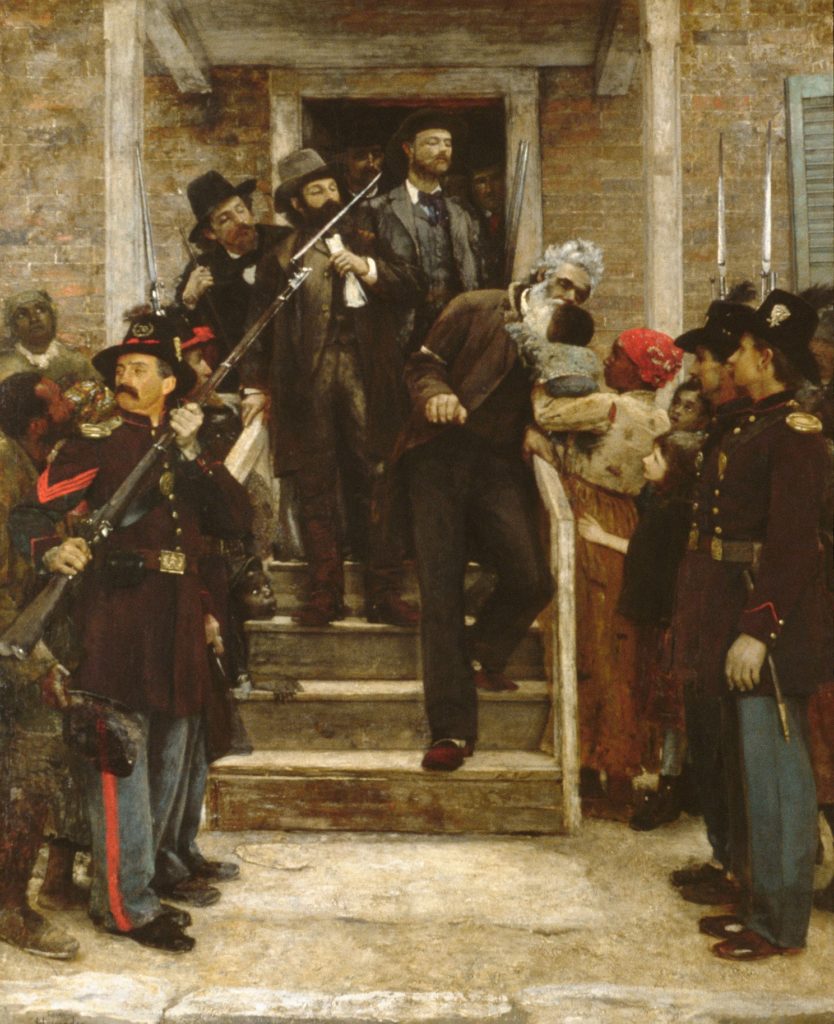
Newspaper accounts reported Brown kissing a baby on his way to be hanged. Thomas Hovenden painted “The Last Moments of John Brown” in 1882-1884. Metropolitan Museum of Art.
In the pro-slavery South, people saw John Brown as a crazy murderer. In the North, people saw him as a hero who risked his life for the freedom of others. The events at Harpers Ferry deepened the divide between the slave states and the free states. This divide would soon cause the Civil War.
John Brown played an important part in U.S. history. As the writer Henry David Thoreau said: “No man in America has ever stood up so persistently and effectively for the dignity of human nature.” Brown is buried in North Elba, New York.
Bobby Shipman is a fifth grader at Tariffville School in Simsbury.
Sources: “From Civil War to Civil Rights” by Rehema Barber, Connecticut Explored, Fall 2005
The National Park Service, https://www.nps.gov/people/john-brown.htm







